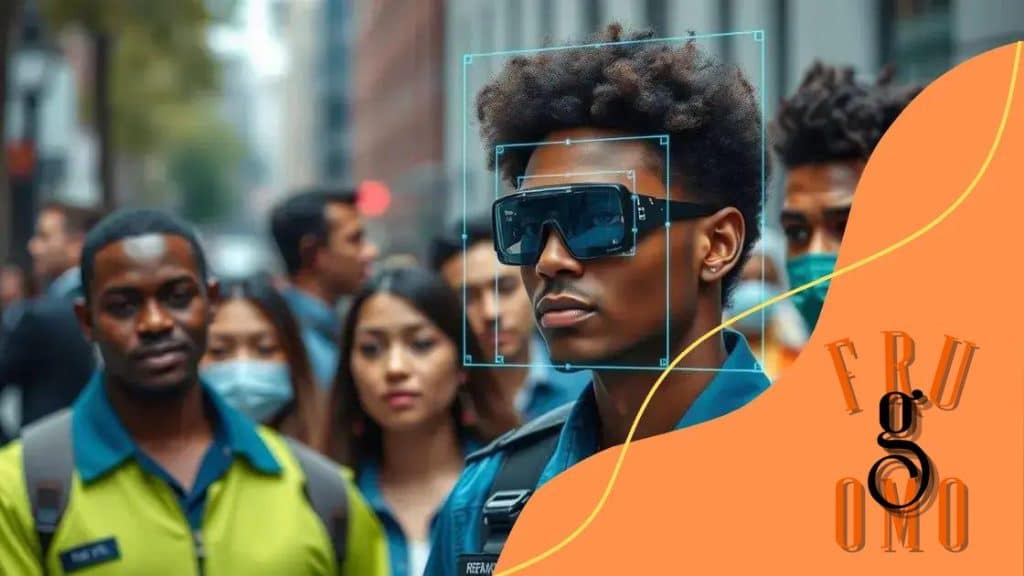The role of facial recognition in enhancing public safety

The role of facial recognition in enhancing public safety includes quick identification of suspects, improving law enforcement efficiency, and streamlining public safety measures, but it raises important privacy concerns that must be addressed through proper regulations.
The role of facial recognition in enhancing public safety is a topic gaining traction as cities adopt new technologies. Have you ever wondered how these systems impact our daily lives? Let’s dive in.
Understanding facial recognition technology
Understanding facial recognition technology is essential in a world where security measures are increasingly vital. This technology analyzes facial features by converting images into data, allowing systems to recognize individuals effectively.
Today, various applications are emerging in different sectors. For instance, airports use facial recognition to enhance security by swiftly identifying passengers. Similarly, retail stores employ this technology to analyze customer behavior.
How facial recognition works
Facial recognition systems use algorithms that compare facial features against a database. This process involves several steps:
- Detection: The system identifies a face in a photo or video.
- Alignment: The face is standardized to a specific size and orientation.
- Feature extraction: Key features of the face are analyzed and converted into data.
- Matching: The data is compared to existing images in the database.
As this technology evolves, it raises questions about privacy and security. Many people wonder how their data is stored and used. Addressing these concerns is crucial for the technology’s future acceptance.
Applications of facial recognition
The uses of facial recognition technology extend beyond security. Other sectors are finding innovative ways to apply this tool:
- Healthcare: It helps in patient identification, ensuring accurate medical records.
- Banking: Some banks use it to verify customer identities for online banking.
- Smartphones: Many devices incorporate facial recognition for secure access.
This versatility illustrates the impact of facial recognition beyond traditional security measures. As society embraces this technology, understanding its workings and implications becomes increasingly important.
Benefits of facial recognition in public spaces
The benefits of facial recognition in public spaces are becoming increasingly evident. As cities look to enhance security measures, this technology offers several advantages that improve overall safety and efficiency.
First, facial recognition can lead to quicker identification of individuals in crowded areas. By integrating this technology into public surveillance systems, authorities can respond more effectively to potential threats or emergencies.
Enhanced security measures
Another essential benefit is the enhancement of security measures in various environments. Public events, transportation hubs, and city infrastructure are more secure with the implementation of facial recognition.
- Crime deterrence: The knowledge that a facial recognition system is in use can deter criminals from engaging in illicit activities.
- Real-time alerts: These systems can alert law enforcement instantly if a flagged individual is detected.
- Efficient crowd management: Facial recognition aids in monitoring large crowds during events, helping to ensure public safety.
Moreover, the integration of facial recognition technology can streamline various processes. For example, in public transportation, it can enable faster boarding, reducing wait times for passengers.
Positive social impact
Facial recognition can also contribute positively to society. It might aid in locating missing persons or identifying suspects in criminal investigations. These outcomes can significantly strengthen community trust in public safety initiatives.
Despite potential concerns, when used responsibly, facial recognition in public spaces can improve safety and security, making our communities more secure. As technology advances, its applications will continue to evolve, offering new opportunities for enhancing public safety.
How facial recognition improves law enforcement

Understanding how facial recognition improves law enforcement is crucial in today’s rapidly changing technological landscape. This innovative technology supports police and other law enforcement agencies in various ways, transforming their operations.
By using facial recognition, police can quickly identify suspects in real-time. For instance, if a crime is committed, law enforcement can analyze surveillance footage and match faces against databases with ease. This capability leads to faster responses to incidents.
Benefits of facial recognition in law enforcement
There are several specific benefits that come with implementing facial recognition:
- Speed: Identifying suspects quickly helps officers make informed decisions rapidly.
- Accuracy: Improved algorithms mean more accurate identifications, reducing wrongful accusations.
- Resource efficiency: Facial recognition allows officers to allocate resources better by prioritizing cases based on data.
Moreover, this technology aids in preventing crime by acting as a deterrent. Knowing that facial recognition systems are deployed can discourage individuals from engaging in illegal activities. Furthermore, it enables law enforcement to monitor high-risk areas more effectively.
Case studies of successful applications
Many cities around the world have successfully adopted facial recognition to enhance public safety. In New York City, for example, the police department reported improved case closure rates after implementing these systems. Law enforcement agencies have also used facial recognition to locate missing persons, thereby reuniting families.
As advancements continue in technology, the application of facial recognition in law enforcement will likely expand. When used responsibly, it has the potential to create safer communities and enhance public trust in the justice system.
Privacy concerns surrounding facial recognition
Privacy concerns surrounding facial recognition technology are critical topics in today’s discussions. As this technology becomes more widespread, many people worry about how their personal information is being used and stored.
One main concern is the potential for misuse of data. If facial recognition systems are not properly regulated, there is a risk that personal data could be exploited by unauthorized parties. Individuals may find themselves under constant surveillance without their consent, which raises important ethical questions regarding privacy.
Data security issues
Moreover, the data collected through facial recognition is often vulnerable to breaches. Law enforcement and private companies store this information, making it a target for hackers. Data leaks could expose sensitive personal information, leading to identity theft or other crimes.
- Unauthorized access: Companies may not have adequate security measures, making data vulnerable.
- Lack of transparency: Users might not know how their data is being collected or used.
- Informed consent: Many individuals are unaware of facial recognition usage in public spaces.
Additionally, people worry about the accuracy of facial recognition systems. Mistaken identifications can lead to wrongful accusations and damages to reputations. High-profile errors have made headlines, creating distrust in these technologies.
Public sentiment and legislation
The sentiment around facial recognition varies. Some support its use for safety, while others view it as a threat to civil liberties. Public opinion is crucial in shaping regulations that protect individual rights. Many cities and countries are considering or have already enacted laws to limit the use of facial recognition technology, focusing on protecting citizens’ privacy.
As technology continues to evolve, it is essential for stakeholders to balance security needs with privacy rights. Engaging in open dialogues will help clarify the potential implications of facial recognition on society.
The future of facial recognition in society
The future of facial recognition in society holds remarkable potential as technology continues to advance. This innovative tool is expected to become even more embedded in our daily lives, impacting various sectors and functions.
As we look ahead, it is important to consider how facial recognition could transform public safety. For example, emergency services may use this technology to identify individuals in distress or need. Quick identification can lead to faster assistance and better outcomes in critical situations.
Integration into everyday life
Facial recognition may also become a standard feature in our everyday experiences. Think about its role in retail. Stores could use this technology to create personalized shopping experiences for customers, recognizing frequent visitors and tailoring offers accordingly.
- Home security: Smart home systems may incorporate facial recognition to enhance safety, allowing only recognized individuals access.
- Travel efficiency: Airports could streamline check-ins and security processes with facial recognition, reducing wait times significantly.
- Healthcare improvements: In hospitals, this technology might be used for patient identification, ensuring accurate record management.
Alongside these benefits, the future also raises ethical concerns. Society must address questions about privacy and consent. Balancing advancements with the protection of individual rights will be essential.
The role of regulations
Governments and organizations are likely to implement regulations that guide the use of facial recognition. Creating laws that protect citizen rights while allowing for security benefits will be a challenging yet necessary task. Continued dialogue among stakeholders is essential to establish public trust.
Finally, as technology evolves, ongoing discussions about the implications of facial recognition technology will shape how society uses it. Engaging with diverse perspectives will ensure a future where this technology enhances our lives while respecting privacy.
FAQ – Frequently Asked Questions about Facial Recognition Technology
What is facial recognition technology?
Facial recognition technology analyzes images of faces to identify individuals, often using databases for matching.
How does facial recognition enhance public safety?
It helps law enforcement quickly identify suspects and manage crowds, leading to faster responses in emergencies.
What are the privacy concerns associated with facial recognition?
Concerns include unauthorized surveillance, data security risks, and the potential misuse of personal information.
What regulations exist for facial recognition usage?
Many places are implementing laws to protect citizens’ privacy while allowing the use of facial recognition for security purposes.





